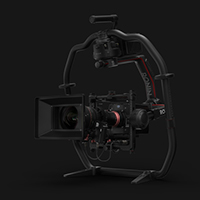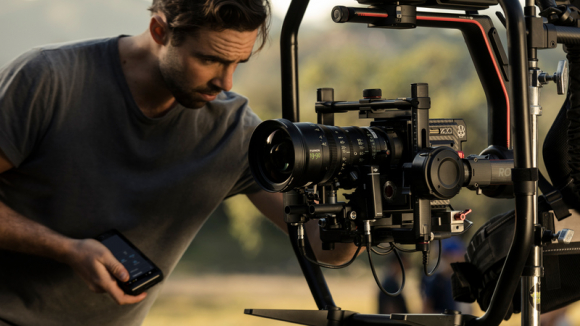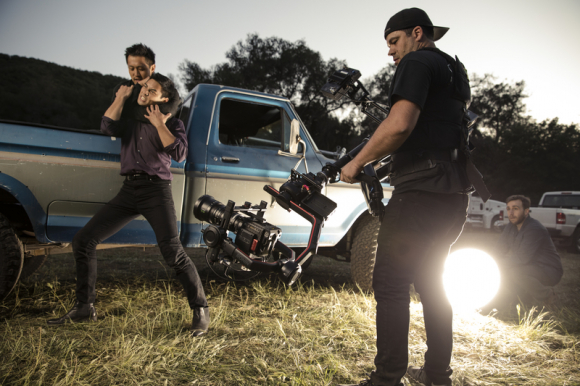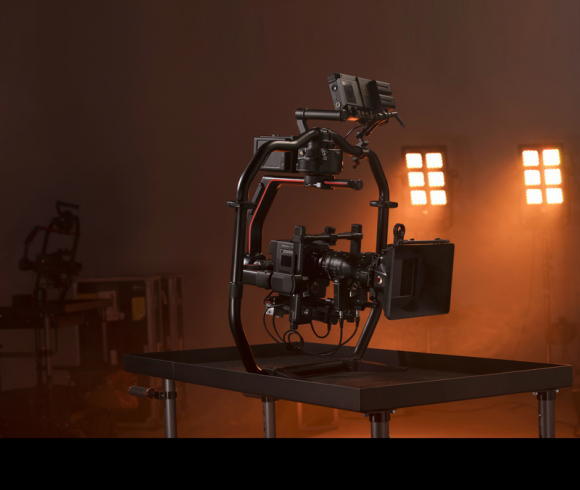DJI’s new Ronin 2 looks like the most advanced gimbal on the market
posted Monday, April 24, 2017 at 9:50 AM EST

DJI has introduced a new camera stabilizer for professional sets called the Ronin 2, and from all appearances it may be the most advanced gimbal of its type that exists. The Ronin 2 has more power and torque to carry larger cameras than its predecessor, and has more "intelligent features" to allow for new and unusual camera moves that will give filmmakers the ability to land shots they couldn't until now.
Ronin 2 has an enlarged camera cage and 50mm extendable arms which can support everything from DSLRs to full cinematic cameras and lenses. Thanks to the new and more powerful gimbal motors, there is sufficient torque to handle payloads of up to 30 pounds. Aided by onboard GPS, the encoded motors let Ronin 2 travel at speeds of up to 75 mph while delivering the same 0.02 degrees of sub-pixel level precision that previous Ronin users would be used to.
Looking at images of the Ronin, it's clear the design is different. Ronin 2 features a redesigned carbon fiber monocoque-style frame, providing the highest quality manufacturing ever in a handheld stabilized camera rig while making the platform durable, lightweight and easy to carry. New fold-away feet enable the operator to set the platform down during handheld filming without the need for a separate stand - a huge plus for both the operator and any mobile team (the stand requirement is a hassle and can often require two people to coordinate setting down the current Ronin gimbals). The motor is also now splash-proof and enclosed with internally-routed power. It also features a detachable grip, which brings custom stabilization to the full range of camera mounts that filmmakers rely upon. From basic handheld and jib configurations to Ready Rig, plus cable cams, vehicles and drones, as well as a new two-axis operation mode for mounting to Steadicams all offer unique and creative movements that DJI says were once impossible to perform. The quick-release mount makes it easy to transfer seamlessly from one scene to the next, and a redesigned dual band 2.4/5.8 GHz remote allows minimized interference for full control during remote and two-person operation at a range of nearly 1.5 kilometers.

The Ronin 2, thanks to the aforementioned internally-routed power, also has integrated power and data ports for a centralized system to power not only the gimbal, but the camera. It features four 14.4-volt (8 amps total) ports near the camera cage, two 12.6-volt (4 amps total) ports near the pan motor, and one P-Tap 12.6-volt (4 amps) outlet on the battery mount. The battery system itself is a dual hot-swappable system that can give shooters continuous uptime without having to power down and switch batteries. And since those batteries can also power the camera, that means that a shooter will never have to power down either their gimbal or camera if they can continuously swap one of the two Ronin batteries on the gimbal. Each battery can independently provide 2.5 hours of runtime to power the gimbal and a RED Dragon camera. The Ronin 2 uses the same fast charging, high-capacity, self-heating batteries as the DJI Inspire 2, which is a boon to users who are already using DJI's latest drone, and allows teams to simplify battery management (you know, the batteries that can operate in -4 degrees Fahrenheit). The battery system is fully detachable to provide a portable power supply for any 12-volt P-Tap powered camera or accessory.

DJI completley updated the DJI gimbal assistant mobile app to now provide a more intuitive and easier-to-use interface. It includes new studio-oriented functions to capture complicated camera moves that once required specialized expertise or additional equipment.
The Ronin 2 has a new Panorama mode (which automatically controls the Ronin 2 to create still-image panoramas that account for the camera sensor type and lens focal length as well as user-defined overlap rate), a new timelapse mode (which can program multiple movements and camera actions along different points along a route and allows you to view progress in real-time), and the new CamAnchor mode, which lets operators quickly record a preferred gimbal orientation at particular locations, then revisit them with a simple touch as the camera moves from point to point. The intelligent SmoothTrack system that provides stable images while the camera is on the move has been enhanced with an updated algorithm for keeping Ronin 2 in sync with the operator’s movements for maximum stability and reliability.

No pricing or specific release date for the Ronin 2 was provided by DJI, but they did say to expect it in the second quarter of 2017 and that the pricing would become available just prior to its availability. For more information, head over to DJI.com/Ronin-2.